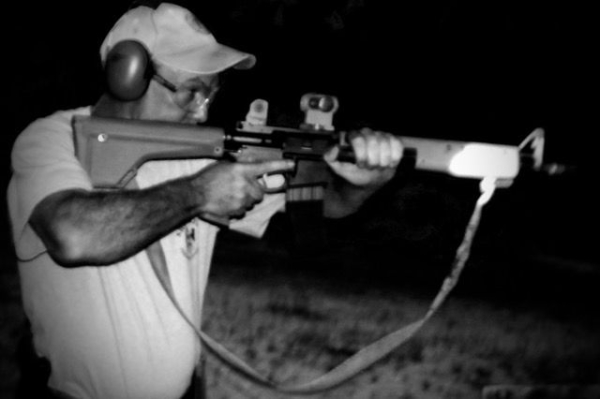
When was the last time you did any low-light practice? A large portion of attacks occur in low-light environments. Working the pistol in the dark is a different experience. Add in a flashlight and things get more complicated. The principles for working in low-light environments and the proper techniques to achieve these goals are not something you want to learn on the job.
The first step is learning to manipulate your weapon based on feel. You should be able to load, reload and clear malfunctions without needing to see the weapon. During the fight you want to keep your eyes on the threat(s). They’re not going to stand still while you’re eyeballing the pistol to reload or clear a stoppage. Plus, when it’s dark looking at the pistol won’t help any. Dry practice, using dummy rounds with your eyes closed until you can do everything based on feel.
There are numerous techniques for using a hand-held light in conjunction with pistol or long gun. There’s no one method that will do everything needed. At the same time, you don’t need thirteen various ones to choose from. I teach four. The “Jaw” – light is held against the jaw, the beam in alignment with where you’re looking. This is the quickest technique to assume and fire, although with one hand. It’s also safe, allowing you to draw and holster without muzzling the support hand/arm holding the light.
The “Harries” technique is used on the strong side of the weapon. For right hand shooters this is used for clearing a left turn corner and working to the right of cover. For a right turn corner and working the left of cover, the “Reverse Harries” positions the light on the support side of the weapon. The “old” F.B.I. method of holding the light off to the side works well for scanning, and moving shadows to reveal what’s hiding there.
How much should you use the light? As little as possible or as much as necessary. There may be enough ambient light that you can move without using the light. Then, when seeing something suspicious, use the light to determine whether it’s trouble or not. Or, it’s so dark you’re going to need the light to navigate, ensuring you don’t step out into trouble. The light is used to locate, identify and -- if needed -- engage the threat.
In addition to navigating unfamiliar terrain, the light can be used to communicate, indicating an area of concern or escape to a partner. A quick blast of bright light to the threat’s eyes is a good way to disorient them, buying time for you to move. The flashlight can also be used as an impact weapon, much more effective than flesh and bone.
While a weapon-mounted light simplifies things, it’s still necessary to learn the proper application of weapon and light. Plus, it’s a good idea to have a hand-held light. It offers more versatility, and serves as back-up if the mounted light fails. Part of your every-day-carry gear should include a flashlight.
How long has it been since you’ve practiced in the dark? Probably too long.
Tiger McKee is director of Shootrite Firearms Academy. He is the author of The Book of Two Guns, AR-15 Skills and Drills, has a regular column in American Handgunner and makes some cool knives and custom revolvers. Visit Shootrite’s Facebook page for other details.